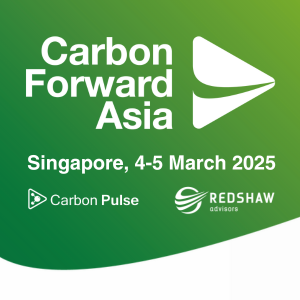(corrects 2012 estimated emissions in par 6, which changes the values in par 7)
Brazil’s will cut its greenhouse gas emissions 37% on 2005 levels by 2025, President Dilma Rousseff said on Sunday, flagging the country’s INDC at the UN General Assembly in New York.
The unconditional goal is among the most ambitious in percentage terms so far, though it would still allow emissions to rise by around 8% on 2012 levels.
It makes Brazil one of the few developing nations to announce an absolute emission target in its contribution to a UN climate pact, rather than merely limiting growth from unchecked levels.
The 2025 target would require Brazil’s emissions to reach 1.3 billion tonnes of CO2 equivalent, compared to its 2005 level of 2.1 billion tonnes.
The INDC included a “subsequent indicative contribution” to cut emissions 43% under 2005 levels by 2030, which it said would require emissions to reach 1.2 billion tonnes.
Brazil’s total emissions have fallen sharply since 2005 to around 1.2 billion tonnes by 2012 as government efforts to curb deforestation took hold, although its energy-related emissions have risen.
This means INDC’s 2025 goal would represent an increase of around 8% on the estimated 2012 levels, while returning to 2012 levels by 2030.
The economy-wide INDC is still deeper than Brazil’s 2020 voluntary GHG pledge of 36.1-38.9% below BAU levels, which translated to a 15-18% cut on 2005 emissions.
SECTOR ACTION
Referring to previously announced plans, Rousseff said the goal will be met by ending illegal deforestation by 2030, restoring 12 million hectares of forested land and 15 million hectares of degraded pastures.
It will also increase the share of renewables to 45% of Brazil’s energy mix, with 23% of its electricity generation to come from wind, solar and biomass, a 10% increase in energy efficiency, and to have 16% of biofuels from sugar cane in its total energy mix.
“We have one of the world’s largest populations and GDP, and our targets are as ambitious or more ambitious than those of developed countries,” Rousseff told the UN.
USE OF MARKETS
The published INDC did not mention whether Brazil intends to launch a domestic carbon market to help drive down emissions. Brazil has made several limited steps towards introducing cap-and-trade, including a nine-month simulation among major companies last year and a planned ETS in Rio state that was delayed indefinitely by the governor ahead of its planned 2013 launch.
Brazil has been one of the biggest generators of CDM carbon credits used mainly by the EU and Japan to meet emission targets. The INDC emphasised that the further transfer abroad of units representing emission reductions made on Brazilian territory would require the government’s consent and this would not happen unless endorsed under the UNFCCC and its related instruments.
“Brazil will not recognise the use by other Parties of any units resulting from mitigation outcomes achieved in the Brazilian territory that have been acquired through any mechanism, instrument or arrangement established outside the Convention, its Kyoto Protocol or its Paris agreement,” the INDC said.
EMISSIONS IN CONTEXT
The emission target is one of the biggest in percentage terms announced by any economy to date, though by using a 2005 reference level rather than the 2010 mark environmentalists had urged it to means the goal already accounts for the substantial emission reductions made over the past decade by reining in rampant deforestation.
The pledge falls short of environmental campaigner calls for it to pledge zero net deforestation, which they say is needed to eliminate a greater amount of legal logging recently permitted under the country’s revamped forestry laws.
Green groups have also been calling for Brazil’s INDC to include policies on the country’s rising transport emissions and details on limiting expansion of its largely untapped offshore oil and gas reserves.
By Ben Garside – ben@carbon-pulse.com


